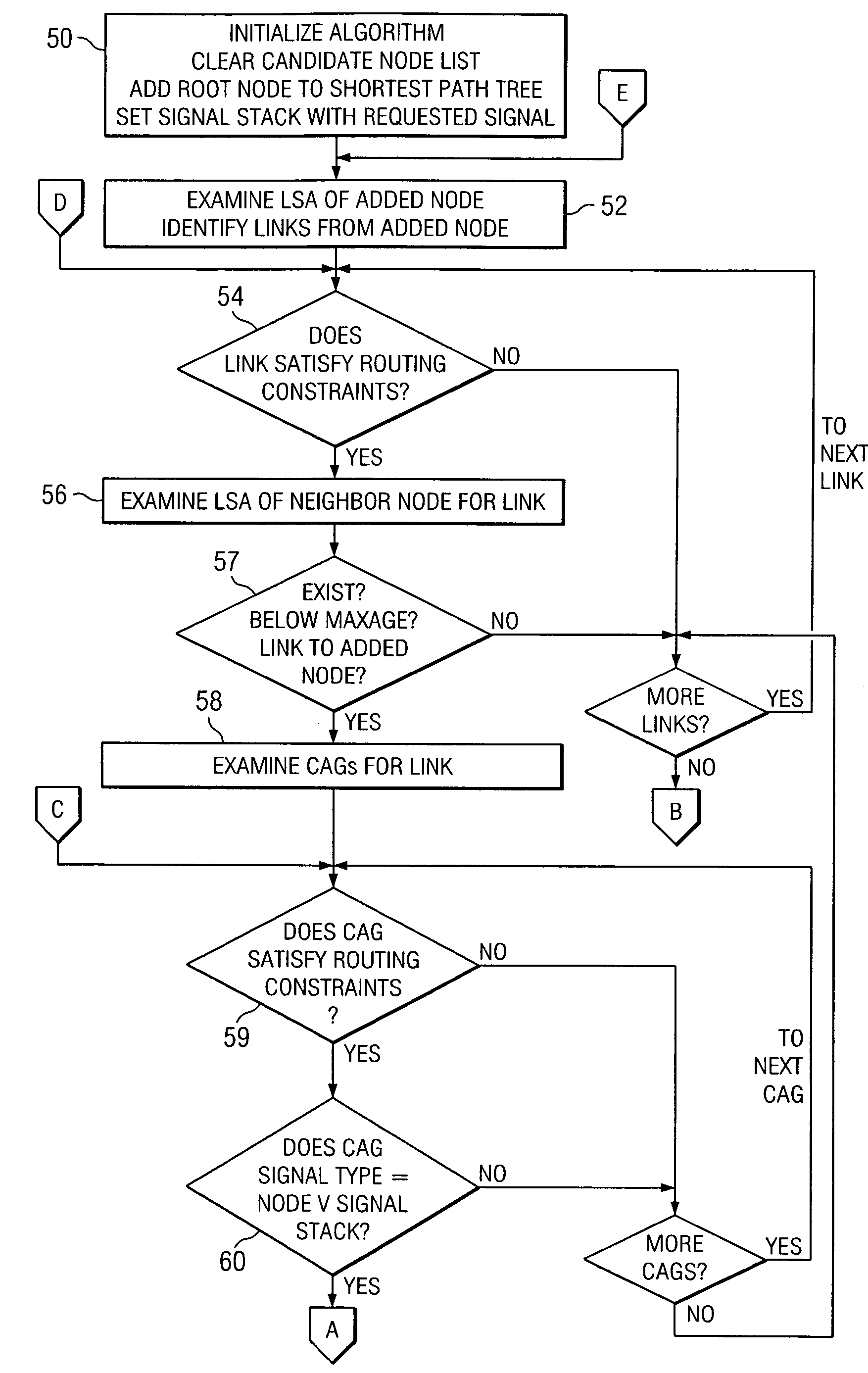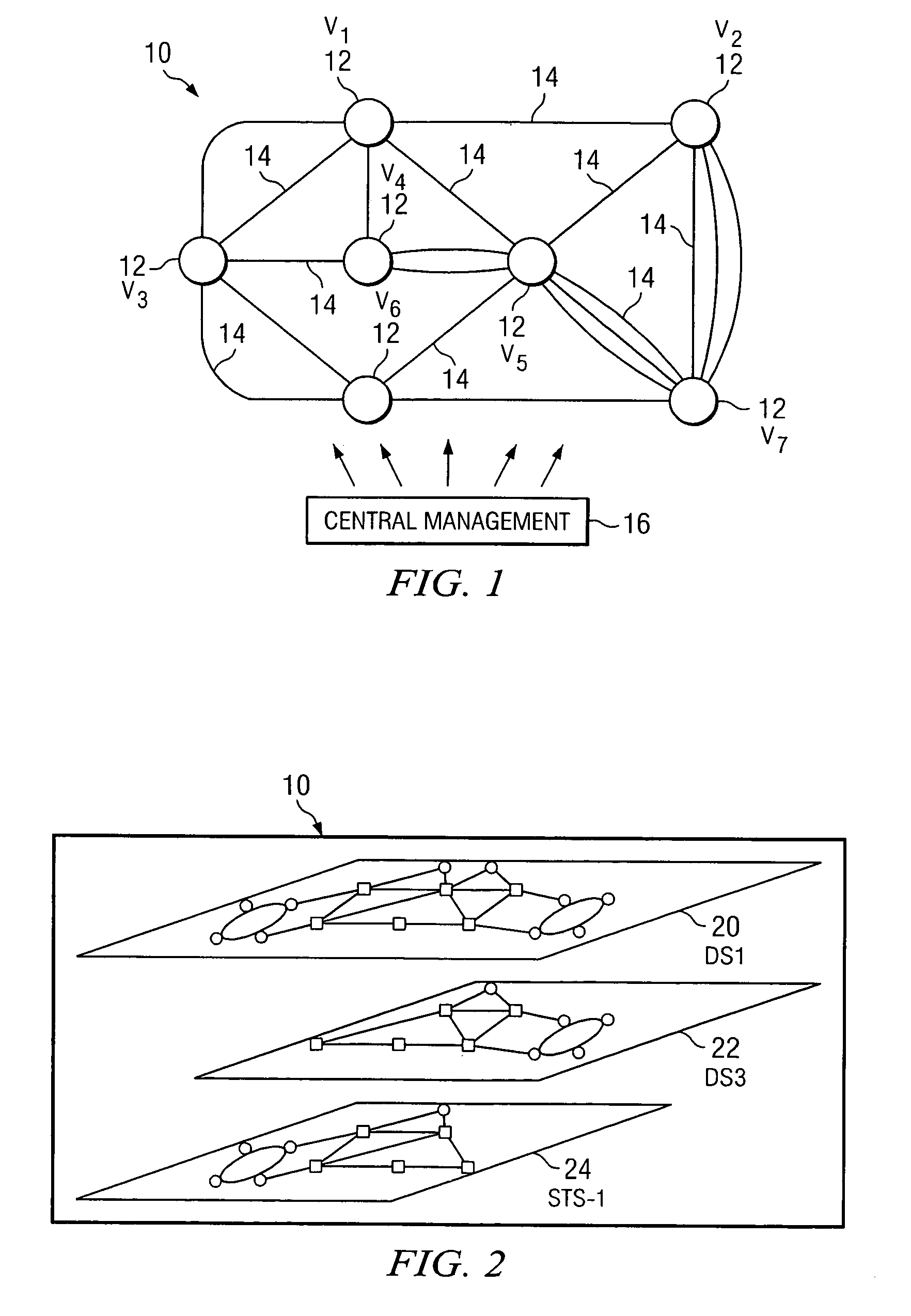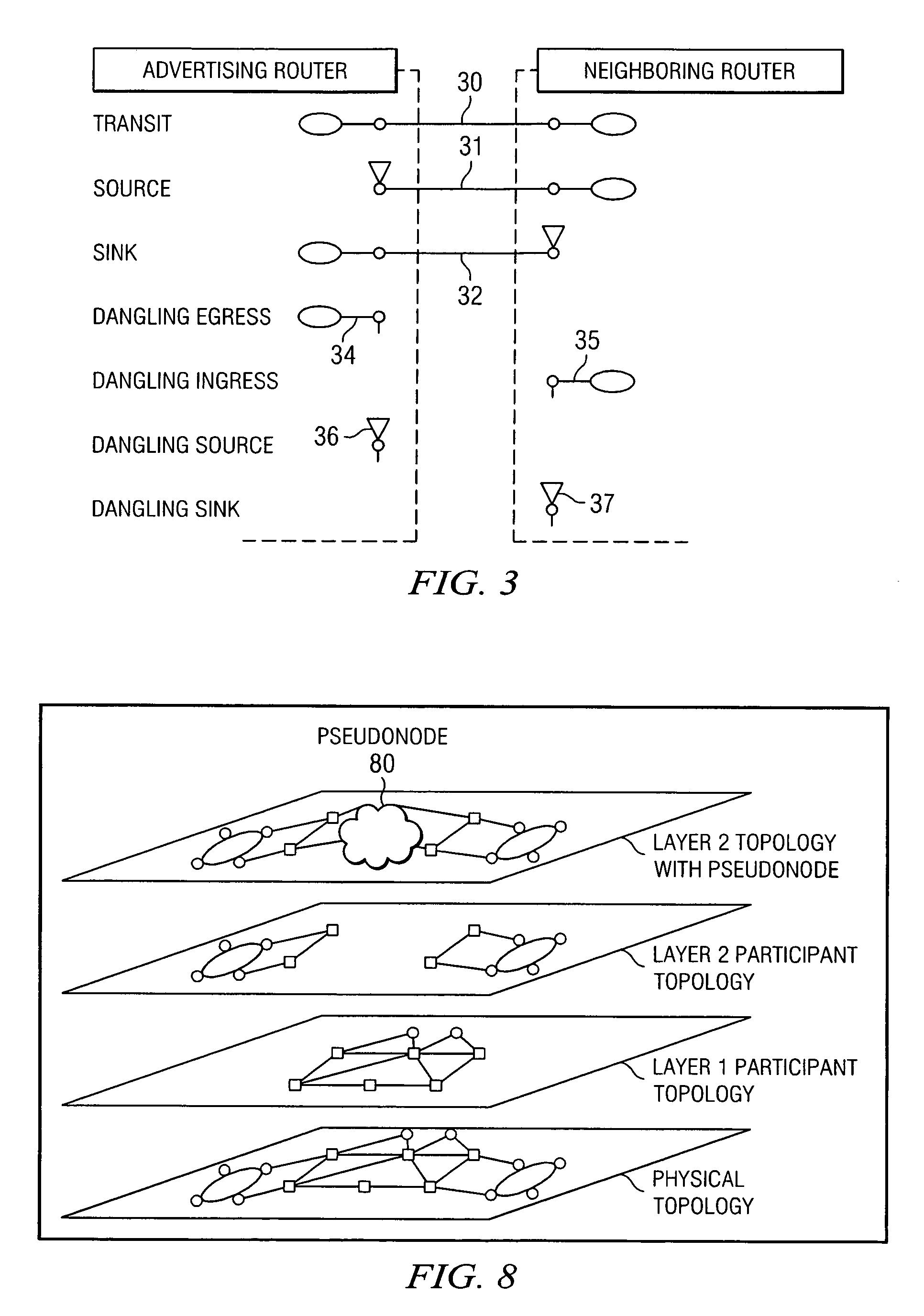Method and system for multi-layer network routing
- Summary
- Abstract
- Description
- Claims
- Application Information
AI Technical Summary
Benefits of technology
Problems solved by technology
Method used
Image
Examples
Embodiment Construction
[0019]FIG. 1 is a simplified diagram of a telecommunications network 10. Telecommunications network 10 includes a plurality of switching points or nodes 12 interconnected by links 14. Each node 12 is operable to transfer telecommunications signals using one or more signal types. Examples of signal types include Digital Service Level 1 (DS1), DS3, Virtual Tributary Level 1.5 (VT1.5), Synchronous Transport Signal Level 1 (STS-1), STS-3c, and Optical Carrier Level 3 (OC-3). Nodes 12 may also support other conventional signal types readily known by those skilled in the art. Each signal type represents a different connection routing layer within telecommunications network 10. For each signal carried within telecommunications network 10, a route to its intended destination is determined. Determination of the route through telecommunications network 10 may be made at an originating node 12, a node 12 acting as a supervisory or control node, or at a centralized management node 16 according ...
PUM
 Login to View More
Login to View More Abstract
Description
Claims
Application Information
 Login to View More
Login to View More - R&D
- Intellectual Property
- Life Sciences
- Materials
- Tech Scout
- Unparalleled Data Quality
- Higher Quality Content
- 60% Fewer Hallucinations
Browse by: Latest US Patents, China's latest patents, Technical Efficacy Thesaurus, Application Domain, Technology Topic, Popular Technical Reports.
© 2025 PatSnap. All rights reserved.Legal|Privacy policy|Modern Slavery Act Transparency Statement|Sitemap|About US| Contact US: help@patsnap.com



